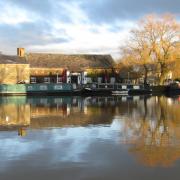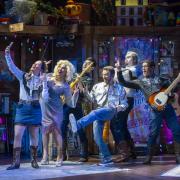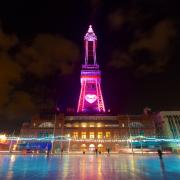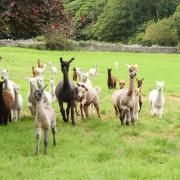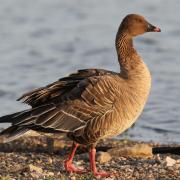Lakeland is synonymous with sheep and a mother and daughter team are helping keep traditional skills alive with gatherings of wool crafts followers. The Cumbrian Wool Gathering this month will be a celebration of knitting, spinning, weaving and felting.
A mother and daughter team are helping to keep alive traditional skills going back centuries by organising gatherings of wool crafts followers.
Carol and Michelle Greaves are joint organisers of Cumbrian Wool Gathering which comes to Junction 36 of the M6, near Kendal, later this month.
A pilot gathering at the new venue last year was so successful that they are coming back bigger and better this year.
They launched Wool Gatherings in their home county of Derbyshire back in 2013. Carol, now in her 60s, had a life-long interest in wool, knitting and even becoming a pattern tester for top brand Sirdar. She eventually opened a wool shop in Glossop and attended an event at Bakewell’s agricultural centre which folded after a couple of years.
‘Mum thought it had a lot of promise and approached the venue to get potential dates for a festival and took it from there,’ said daughter Michelle. ‘There were already festivals like WoolFest in Cockermouth and Wonderwool in Wales.

‘She started something with the same ethos nearer to the centre of England so more people could get there. She focussed on the local wool processors of yarn and supporting the local wool producers.
‘A lot of wool for knitting came from overseas at that time and local producers were having to burn their fleeces because the price they were offered by the Wool Marketing Board was next to nothing. One of the first things we did was introduce a fleece stand, where farmers could get a fair price for their produce.
‘There is a wide range of visitors and exhibitors who want wool in all its various forms: some want processed yarn, but others want dyed form which is carded but want to spin it themselves. The raw fleece is a blank canvas, which people can card, spin or whatever they want to do themselves. These are skills that go back for centuries and it is great to help people keep them alive.’
After its 2013 launch the Bakewell Wool Gathering, held in October, was running out of space for the demand and the Greaveses opened another Gathering at Pavilion Gardens in Buxton, which held its first event in 2019. Covid intervened but the couple were back in 2022. The Buxton Gathering, in May, was its third.
Meanwhile, the trailblazing Woolfest ceased in 2022, with venue issues and the demise of one of the original founders.
Kendal Wool Gathering, which launched in 2013 and attracted up to 6,000 visitors a year had a similar journey. Kendal’s main sponsor was the Town Council, but organisers found it difficult to find a permanent suitable venue within the parish boundaries. K Village shopping complex, Kendal Leisure Centre and Kendal Town Hall were all tried, with varying levels of success.

The enforced shutdowns during Covid coincided with the organisers reaching retirement age and it too folded. So, the Lake District, famous for its sheep, was in danger of losing out on the wool gatherings phenomenon.
Mrs Greaves, who had attended Woolfest in Cockermouth and built contacts in Lakeland’s craft community, was keen to fill the vacuum.
The Greaveses were encouraged to look at the Junction 36 Rural Auction centre by Kendal Wool Gathering stalwart Sara Last, who now runs The Threshing Barn, and is a regular attender of wool gatherings all over the UK.
Cumbrian-born and bred Sara was an artist and potter who had moved into arts administration when running Farfield Mill in Sedbergh. There she got the wool craft bug and met Janet Phillips, founder of The Threshing Barn, which sells spinning, weaving and felting equipment and supplies.
After Sara left Farfield she regularly helped Janet at Wool Gatherings before acquiring the business in late 2021. She also helped organise Kendal Wool Gathering.
She said: ‘After the loss of Woolfest and Kendal Wool Gathering, it is fantastic that we can keep wool gatherings alive in this sheep-dominated county. I was delighted to suggest the junction 36 Rural Auction centre, which is an obvious venue.’
There were 75 exhibitors and 2,000 visitors at the first Cumbrian Wool Gathering in 2023. Most of them gave very positive feedback, so 2024 will be even larger. There are 85 exhibitors and for the first time they will be making use of the livestock pens used for auctions. There will be at least three breeds of sheep and angora rabbits on show.
Diary dates
The Cumbrian Wool Gatherings will take place at Junction 36 Rural Auction Centre on June 22 and 23. There is parking for disabled visitors at the centre, with further parking at the nearby Westmorland Agricultural Society HQ at Crooklands. Shuttle buses are due to run from there and Oxenholme railway station. cumbrianwoolgathering.co.uk
The Bakewell event will take place at the Agriculture Centre on October 19 and 20.

The hardy Herdy
Lakeland has always been synonymous with sheep – and particularly the Herdwick, a breed virtually unique to the Lake District which has evolved in harmony with its habitat to become a vital part of the delicate ecology and economy of the area.
It’s hard to imagine a Lakeland landscape without a hardy Herdwick sheep grazing on a rocky fell, or tending its lambs in the valley bottom.
Beatrix Potter was a big fan, keeping Herdwicks on her farms, winning prizes for her ewes at shows and acting as president of the Herdwick breed society. And when she left 15 of her farms to the National Trust, she did so on condition that they continued to graze Herdwick flocks.
The Herdy’s shaggy outer coat, which is what makes them so hardy, has been bred out of commercial breeds. The Herdwick’s thick, grey wool is coarse and hard to dye, but you can still wear it, walk on it and even insulate your house with it. It is now also used as a filling for mattresses and to make home furnishings and accessories.
herdwick-sheep.com




